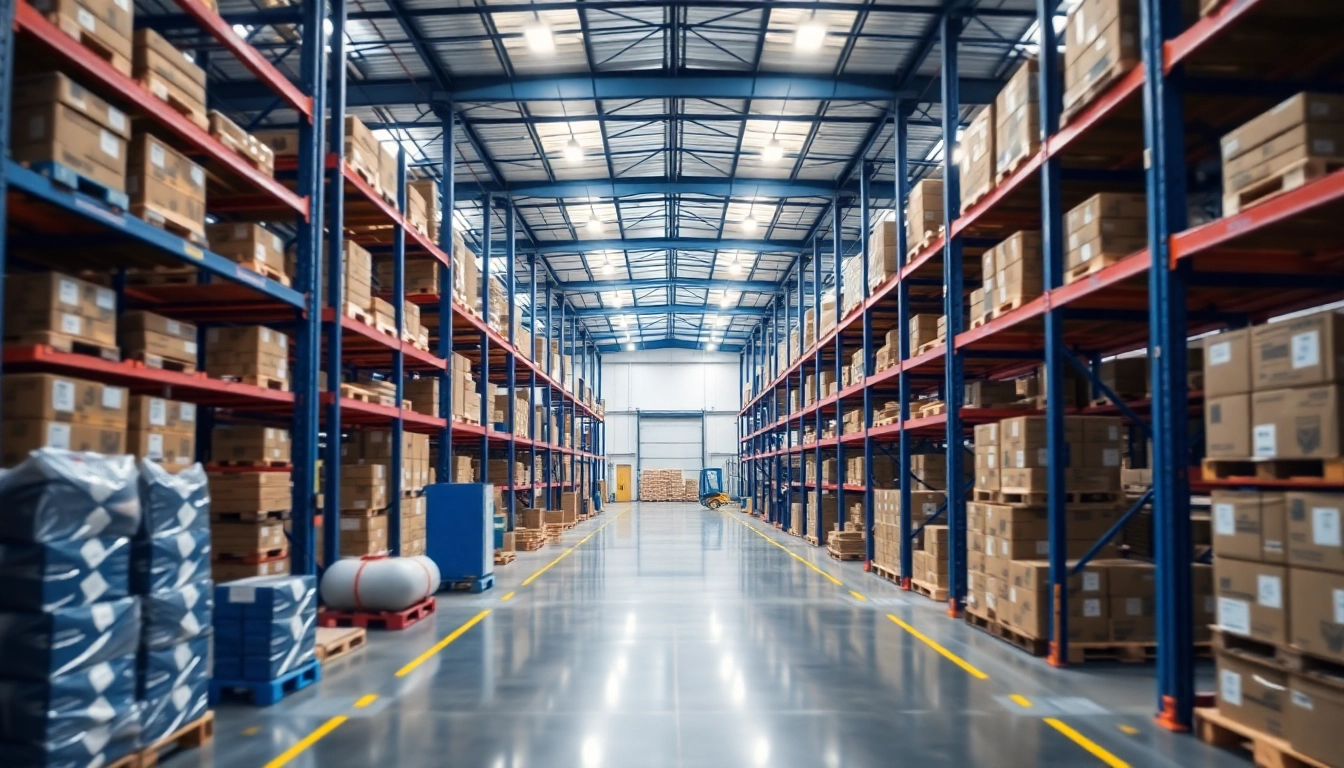Understanding 3PL Solutions
In an era where efficiency and customer satisfaction dictate market success, businesses are increasingly turning to 3PL solutions. Third-party logistics (3PL) is a critical aspect of supply chain management, which enables companies to outsource their logistics and fulfillment processes. This article will delve into the intricate world of 3PL to understand its significance, benefits, types, evaluation criteria, implementation strategies, and future trends.
What are 3PL Solutions?
3PL solutions encompass a variety of outsourcing services that help businesses manage their supply chain operations more efficiently. Typically, they include warehousing, order fulfillment, inventory management, shipping, and transportation. Companies utilize 3PL services to not only reduce costs but also to gain competitive advantages by accessing expertise and technologies that are otherwise unaffordable or impractical.
The Importance of Third-Party Logistics
As businesses grow, managing every element of logistics in-house can become cumbersome. 3PL providers step in as specialized partners to streamline operations, allowing companies to focus on their core competencies. These logistics firms help in:
- Enhancing Speed: By leveraging established distribution networks, businesses can expedite their delivery processes.
- Improving Flexibility: 3PL solutions enable companies to scale logistics operations up or down based on demand, offering more flexibility in line with market fluctuations.
- Accessing Advanced Technologies: Many 3PLs incorporate cutting-edge technology like automation and AI, which can be cost-prohibitive for smaller operations to implement alone.
Key Benefits of Using 3PL Services
The decision to partner with a third-party logistics provider comes with numerous advantages:
- Cost Efficiency: Outsourcing logistics can significantly cut overhead costs associated with maintaining a warehouse, hiring staff, and managing shipping processes.
- Expertise and Experience: 3PL providers are specialists in logistics, bringing years of experience and knowledge about the best practices in the industry.
- Focus on Core Business Activities: Outsourcing logistics allows businesses to concentrate on their primary operations and strategic planning.
- Improved Customer Service: Faster shipment and reliable tracking capabilities enhance the overall customer experience.
Types of 3PL Solutions Available
The landscape of 3PL solutions is diverse, allowing companies to choose options that suit their specific needs. Understanding the types available can help businesses find the best fit.
Standard vs. Customized 3PL Services
3PL services can be broadly categorized into standard and customized solutions:
- Standard 3PL Services: These typically include warehousing, inventory management, transportation, and order fulfillment. They are designed for companies that seek basic logistics support without deep customization.
- Customized 3PL Services: These tailor logistics processes to meet specific business requirements, which might include specialized packing, custom reporting, or unique shipping needs that standard services cannot accommodate.
Integrated 3PL Solutions for E-commerce
In the rapidly growing e-commerce sector, integrated 3PL solutions combine various logistics services into a cohesive package. These solutions often include inventory management, order processing, and shipping, all managed within a unified platform. This integration allows for:
- Seamless Data Flow: Real-time data sharing between the seller and the 3PL can enhance visibility and response times.
- Simplified Management: A single dashboard for tracking orders, inventory levels, and performance metrics simplifies oversight.
Specialized 3PL Solutions by Industry
Industries such as healthcare, retail, and manufacturing may require tailored logistics services due to specific regulatory requirements or operational needs. Specialized 3PLs cater to these industries by offering:
- Temperature-Controlled Storage: Critical for pharmaceuticals and perishable goods.
- Cross-Docking Services: Beneficial for companies that require quick turnover with minimal storage time.
- Regulatory Compliance Assistance: Ensuring adherence to local and global regulations in industries like food and healthcare.
Evaluating 3PL Providers
Selecting the right 3PL partner is crucial for optimizing logistics performance. Businesses should consider several criteria when evaluating potential providers.
Key Features to Look for in a 3PL Partner
When evaluating 3PL providers, it’s essential to consider key features, including:
- Technology Stack: Ensure the provider utilizes modern technology for inventory management, order processing, and tracking.
- Flexibility and Scalability: The ability to adapt and grow with your business needs is crucial for long-term partnerships.
- Customer Support: Effective communication and dedicated support should be prioritized to address any issues quickly.
Performance Metrics and KPIs
Identifying relevant performance metrics is vital to assess a 3PL’s efficiency. Some important KPIs to monitor include:
- Order Accuracy: The percentage of orders accurately delivered to customers.
- Delivery Time: Average time taken from order placement to fulfillment.
- Inventory Turnover Ratio: Measures how often inventory is sold and replaced over a period.
How to Compare Different 3PL Solutions
To effectively compare different 3PL providers, businesses should:
- Request Quotes: Obtain detailed quotes highlighting costs, services, and capabilities.
- Check References: Engage with current or previous customers to gauge satisfaction with the services provided.
- Consider Cultural Fit: A provider aligned with your business culture can enhance collaboration and communication.
Implementing 3PL Solutions Successfully
The transition to a 3PL arrangement can be complex, but with the proper approach, businesses can reap significant rewards.
Steps to Transition to a 3PL Arrangement
Successful implementation involves several key steps:
- Define Objectives: Clearly outline what you aim to achieve by outsourcing logistics services.
- Select a Provider: Choose a provider based on the criteria discussed earlier in this article.
- Develop an Integration Plan: Work with the provider to integrate systems and processes smoothly.
- Communicate Changes: Inform your teams and stakeholders about the transition, ensuring clarity and engagement.
Best Practices for Managing 3PL Relationships
Once a partnership is established, managing the relationship effectively is crucial. Businesses should:
- Regular Check-Ins: Schedule consistent meetings to discuss performance, address issues, and strategize for improvements.
- Set Clear Expectations: Define roles and responsibilities clearly to reduce ambiguity and enhance accountability.
- Foster Collaboration: Create a working environment where both teams feel invested in mutual success.
Integrating Technology with Your 3PL Solutions
The synergy between logistics technology and 3PL services can vastly increase operational efficiency. Businesses should consider:
- Automated Systems: Invest in software for inventory management, order tracking, and reporting to streamline processes.
- Data Integration: Ensure that data flows seamlessly between your systems and those of your 3PL provider.
- Real-Time Analytics: Utilize analytics tools to gain insights into performance, enabling informed decision-making.
Future Trends in 3PL Solutions
As logistics continues to evolve, several trends are poised to shape the future of 3PL solutions, ultimately providing businesses with exciting opportunities and challenges.
Automation and AI in Logistics
Automation is expected to become increasingly prevalent within logistics operations. The introduction of Artificial Intelligence (AI) in 3PL can lead to enhanced:
- Efficiency: Automated processes can accelerate operations, reducing human error and operational costs.
- Predictive Analytics: AI can analyze data trends, helping businesses forecast demand and adjust inventory levels accordingly.
Sustainability Practices in 3PL Operations
As environmental concerns become more crucial worldwide, 3PL providers are likely to increase their focus on sustainable practices. This can include:
- Eco-Friendly Packing Materials: Transitioning to biodegradable or recyclable packing options.
- Green Logistics Initiatives: Optimizing routes and transportation modes to minimize carbon footprints.
The Growing Role of Data Analytics
The use of data analytics within 3PL services is expected to grow significantly. Businesses can leverage data for:
- Performance Measurement: Evaluating operational metrics and effectiveness comprehensively.
- Informed Decision-Making: Utilizing data insights to anticipate issues and strategize logistics improvements.



